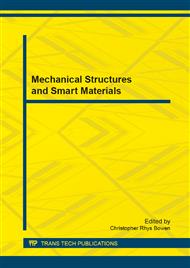p.3
p.7
p.15
p.20
p.25
p.29
p.33
p.37
High Temperature Oxidation Behaviors of CNTs/MoSi2 Composites
Abstract:
Molybdenum disilicide (MoSi2) matrix composites with various contents of carbon nanotubes (CNTs) were fabricated by sintering in vacuum at 1550°C for 1 h. The oxidation behaviors of CNTs/MoSi2 composites at 1300°C for 200 h in air were studied. Results showed that MoSi2 matrix composites with no more than 8 % CNTs in volume had good oxidation resistance at 1300 °C, although addition of CNTs reduced the high temperature oxidation resistance of MoSi2. An approximate linear relationship was found between the weight gain of CNTs/MoSi2 composites and the content of CNTs. The oxidation resistance of CNTs/MoSi2 composites at high temperature decreased with the increasing of CNTs contents. Since the gaseous products were formed during the oxidation process and escaped from the oxide film, the protective film became loose which offered channels for the oxygen soaking into the composites. Thus the oxidation resistance of CNTs/MoSi2 composites was decreased.
Info:
Periodical:
Pages:
15-19
Citation:
Online since:
January 2014
Authors:
Price:
Сopyright:
© 2014 Trans Tech Publications Ltd. All Rights Reserved
Share:
Citation:


